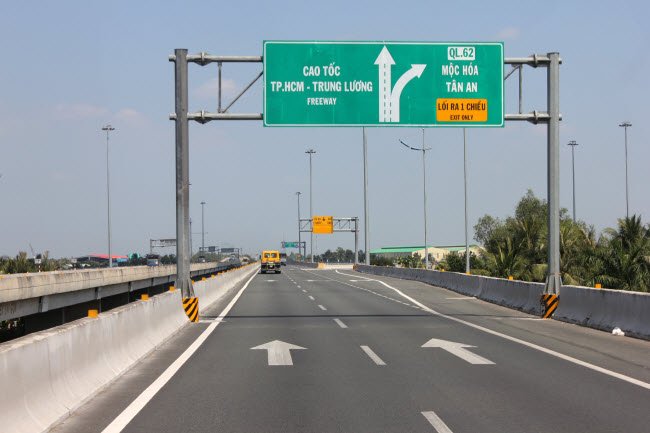
HCMC-Trung Luong Expressway is seen a crucial infrastructure facility connecting HCMC and the Mekong Delta. Secretary of the HCMC Party Committee Nguyen Thien Nhan has proposed investing more in traffic infrastructure in the city and the Mekong Delta region. (Photo: Le Anh)
Speaking at a conference aimed at assessing the two-year execution of the Government’s Resolution 120 on sustainable and climate-resilient development in the Mekong Delta region on June 18, Nhan said that weak traffic infrastructure has hindered the socioeconomic development of HCMC and neighboring provinces.
According to Nhan, the city has close economic connectivity with the Mekong Delta region, so traffic into the region is high. However, investment in traffic infrastructure in HCMC and the southeastern and the Mekong Delta regions remains poor and has yet to match their economic contributions.
HCMC and the Mekong Delta have contributed 42% to the country’s gross domestic product over the past 15 years, but the investment in traffic infrastructure for the two regions accounted for a mere 25% of the country’s total infrastructure investment.
It is necessary to increase funding for infrastructure development in these regions to 35% in the next 10 years, Nhan said.
Apart from proposing extracting part of the city’s tax collection to develop traffic infrastructure in these areas, Nhan pointed out that the mobilization of private resources for infrastructure investment should be enhanced.
The municipal Party secretary proposed issuing government bonds for domestic buyers to focus on investing in traffic infrastructure, adding that the mobilization of this capital resource is practical and will not increase foreign debt.
The total capital proposed to develop traffic infrastructure in the city and the Mekong Delta region will prioritize nine projects to ease traffic congestion, improve transport and boost interregional connectivity. The nine projects are ring roads 3 and 4; HCMC-Can Tho-Ca Mau Expressway; and National Highways 60, N2, 62, 30, 91 and 80.
Earlier, Minister of Transport Nguyen Van The noted that in the 2016-2020 period, the total capital provided by the central budget for infrastructure in the Mekong Delta region was VND65 trillion, making up 15.5% of the country’ total investment in the sector. This money funded the development of the Nam Can-Dat Mui section of Ho Chi Minh Road in Ca Mau Province, Long Binh bridge, a waterway passage for large vessels to the Hai River and Lo Te-Rach Soi Road.
However, The said these investments have yet to produce satisfying results as traffic infrastructure remains a bottleneck to the economic development of the Mekong Delta region. It is necessary to invest more in the traffic infrastructure sector, he said.

















